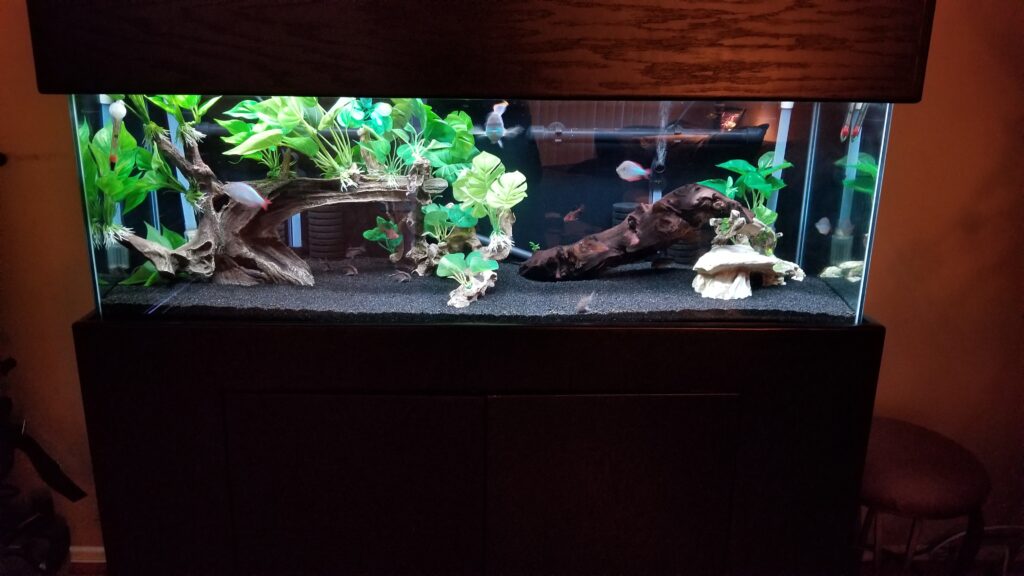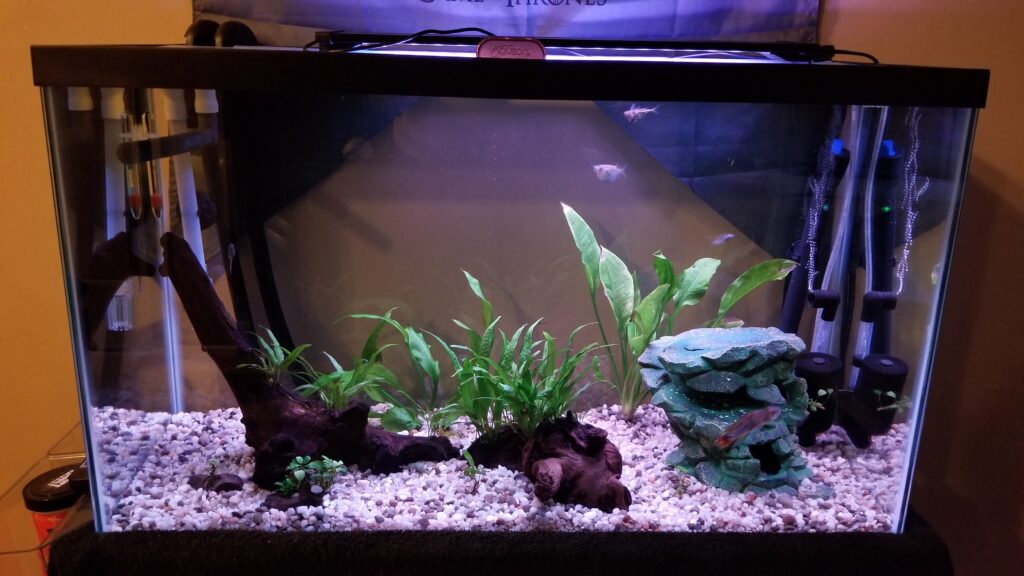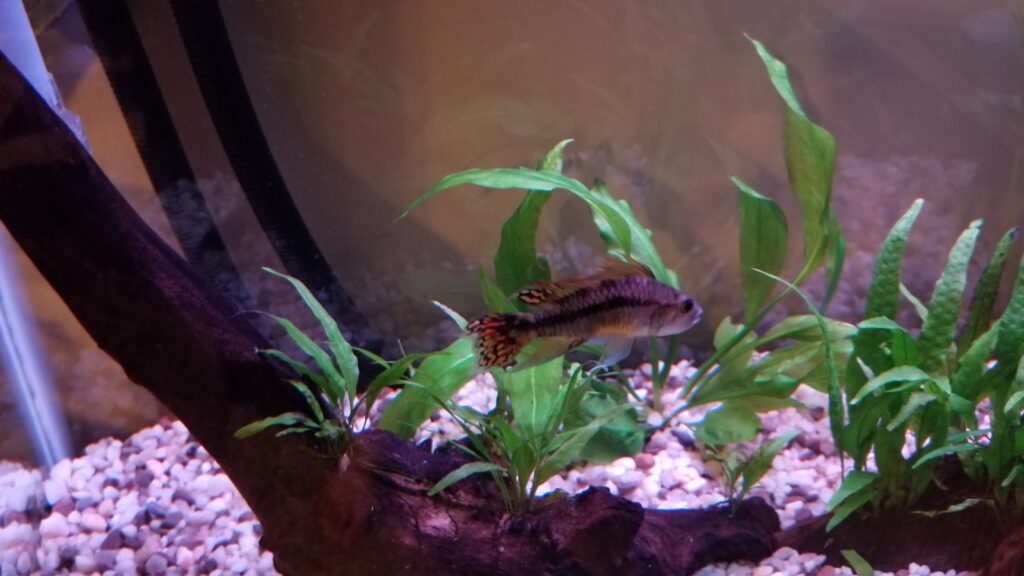
The Houses that Kevin Built
Published May 6, 2020
-My name is Kevin and I love aquariums.
“Hi Kevin, welcome!”
-Thanks, I’m really glad to be a part of all this. I’m here because wanted to tell you a bit about my aquariums and how they got the way they are. Now Im not claiming to be an expert, as there are many ways to do things in this hobby, so long as they net the results you want and the fish need. That last part is a biggie, as I have seen and heard too many people who feel that a simple fishbowl and some flakes will do the job. Well, that’s like getting Netflix and only watching 1 show….it’ll be over quickly, and then what? Ever since I came into the hobby about 3-4 years ago I have always tried to keep one thing in mind about my pets from underwater: There’s a difference between surviving and thriving. It is one thing to keep a fish alive in a bowl, but its another to let that same fish thrive in an environment that can relatively mirror what would be a natural habitat. Goldfish can get up to a foot long, did you know that?
“But Kevin, Ive never seen any goldfish bigger than a few inches. How can they get that big?”
-Well, this goes back to my “surviving vs thriving” statement I mentioned earlier. We all know goldfish as those little fish that is synonymous with the aquarium hobby and industry. Sadly, most goldfish aren’t given the care they need to truly be happy and thrive. Most are placed in a small bowl or aquarium and are given little more than some food every once in a while. This is basically like putting a human in a small room with bread and water once a day. Sure, some may survive on that for a fair amount of time, but by no means are they truly healthy. That’s no way to live. Fish need room to swim, fresh water, and a variety of food to help them truly thrive.
“So, how long can a goldfish live?”
-If kept properly, they can live up to 10-15 years on average.
“Wow, that’s much longer than I ever thought! So, what kind of fish do you have Kevin?”
-I’m glad you asked. Right now I only have 2 fish tanks – a 60 gallon and a 29 gallon. In my 60 I have an Electric Blue Acara, so Dwarf Neon Rainbows, some Serpae Tetras, a Clown Pleco, and some Corydora Catfish. In my 29 I have a Dwarf Cockatoo Cichlid, a couple Hatchetfish, and some Ottocinclus.
“That’s a pretty good variety of fish! I’d love to see some of them.
-Perhaps, but I know and have seen plenty of other people with far more variety, and probably a bit more interesting too! I can show you some pics.
Here is my 60 gallon:

Here is my 29 gallon:

“So how are you able to keep fish alive for a long time?”
-First and foremost, you have to be dedicated to their livelihood. Try to put yourself in their position, and imagine what they want or need to be happy. To put it in more specific terms, fish need a steady and balanced diet. Different fish prefer to eat different things. I feed mine a variety of flakes, pellets, frozen blood worms, frozen brine shrimp, and the occasional
freeze-dried whole shrimp as a treat. You also need to keep up with water changes. This is especially important.
“What do you mean by water changes?”
-Fish poop, just like everyone and nearly everything else. As waste gets into the water theres a chemical process that takes place, which builds up levels of things called ammonia and nitrogen to name a couple. As these build up, it becomes more toxic to the fish. Think of the air we breathe, and it slowly becoming polluted over time. We are going to need some fresh air at some point, or we may suffer! The same applies to fish and their water. We need to change out some of the water in the tank periodically and replace it with fresh, clean water. I tend to change the water in my tanks about every 2 weeks, replacing about 50% of it each time. I didn’t come to this amount and frequency on a whim, I tested the water in the aquarium quite often and did different amounts of water changes based on the amount of fish I had and the filtration setup I have. Through some trial and error, I found my “sweet spot” for water changes. But keep in mind, every tank is different. What works for me may not work for you. You will have to see for yourself. There are other things you want to keep an eye out for too, like water testing. This will help tell you how the water parameters are so you can help determine of there are any problems going on that you cant see with the naked eye.
“So what’s your favorite fish that you have?
-It’s hard to pick a favorite, as I like all of them, that why I got them! But if I had to pick, I’d say my cockatoo cichlid. He a cool looking fish, and has a bit of personality too! He definitely knows when I’m around.

“This is great, Kevin. You sure sound like you love this stuff!
Im still a relatively young fishkeeper compared to may others, and far from anything called an expert, but my passion burns bright. And when it comes to doing what is possible for the little guys, I do anything I can to ensure they have what they need to survive, and more importantly, thrive!
| Prev Post |  |
Next Post |
